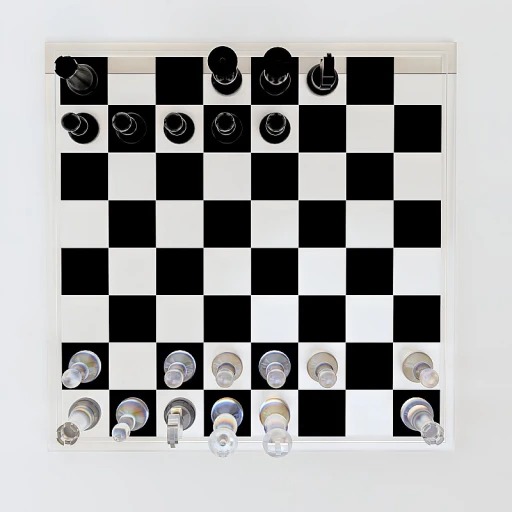Understanding the Role of a Teacher Aide
Grasping the Responsibilities of a Teacher Aide
Understanding the role of a teacher aide is pivotal when preparing for an interview in this field. The position is integral to the education system, providing essential support to teachers and enhancing the student learning experience. As a teacher aide, you act as a bridge between teachers and students, ensuring that the classroom environment supports diverse learning styles and needs. One of your primary responsibilities will involve working with children and fostering an environment where students feel safe and encouraged to learn. The role encompasses a variety of tasks, such as assisting with lesson preparations, managing classroom materials, and supporting students, including those in special education settings. Additionally, you will often facilitate small group activities, ensuring all students are engaged and learning at their own pace. Moreover, possessing classroom management skills and the ability to adapt teaching strategies according to students’ needs are crucial attributes. As you prepare for your aide interview, be ready to provide examples that demonstrate your experience in these areas. Highlighting your capability to maintain a positive learning environment can set you apart from other candidates. Modern aide positions also touch on the realm of professional development as educational environments continue to evolve. Familiarity with behavioral interview techniques will be beneficial, as it helps frame your experiences effectively; for instance, learning about the STAR method can aid in formulating clear and concise answers during the interview. To gain a wider perspective on the importance of understanding the intricacies of your role, exploring resources like those discussing the evolution of interviews can be beneficial. For more insights into how video technology is revolutionizing the interview process, check out this informative guide on navigating the role of video interviews in the hiring process. This can provide a deeper understanding of how digital tools impact contemporary hiring experiences in education bureaucracies.Common Interview Questions for Teacher Aides
Preparing for Interview Queries
Embarking on a teacher aide interview, it's crucial to anticipate the types of questions you may encounter. Common queries often involve exploring your specific role within the classroom and assessing your understanding of classroom dynamics. The interviewer will likely be interested in how you support students and teachers, adapting to varying learning styles, and managing the classroom environment.
Expect to receive behavioral interview questions where your past teaching experiences are discussed. For instance, you might be asked, "Can you describe a time when you had to assist students with special education needs?" Here, delving into your practical experience is crucial. An effective approach is using the STAR method - discuss the Situation, Task, Actions taken, and Result achieved, to provide a comprehensive answer.
Another frequently asked question might pertain to your strategies in maintaining an effective learning environment. A well-rounded response could emphasize your skills in classroom management, the ability to foster a nurturing space where students feel supported, and your strategies to adapt to different learning styles.
When preparing for your interview, consider exploring how you can demonstrate being a proactive teaching assistant. Address how you have previously helped children feel safe and engaged while meeting educational goals. This preparation will not only help you answer questions confidently but also convey your readiness for this vital educational role.
Highlighting Your Skills and Experience
Demonstrating Your Unique Abilities
In preparation for an aide interview, you will want to present your skills and experience in a manner that aligns with the role’s expectations while making you stand out. Emphasize your proficiency in classroom management and your ability to support students in their learning journey. Highlighting your familiarity with diverse learning styles can further solidify your suitability for the position.
Consider these tips to effectively communicate your qualifications:
- Use the STAR method: Demonstrate your experience through Situation, Task, Action, and Result. Provide concrete examples of how you have successfully adapted to classroom environments or effectively answered challenging interview questions. This method can help frame your past experiences in a structured and impactful manner.
- Focus on your role as a supportive assistant: Illustrate moments when you have successfully supported students, collaborated with teachers, or contributed to a positive learning environment. Your experience working with diverse student demographics, including special education, can be a key asset.
- Address gaps or career changes pragmatically: If you are transitioning from another field or have gaps in your employment history, be ready to address these directly. Instead of focusing on what you might lack, emphasize how your unique background can offer fresh perspectives and innovative solutions in the classroom.
When formulating your responses, it's essential to tailor them to the specific demands of the school or educational institution. Each teaching assistant role may have distinct needs, so adapt your examples to align with the position for which you are applying.
For more insights on preparing for assistant interviews and positioning your skills effectively, consider checking out our guide on essential questions for interviewing a medical assistant. This resource can offer valuable perspectives applicable across various educational support roles.
Behavioral Interview Techniques
Maximizing Success with Behavioral Interview Techniques
When preparing for your teacher aide interview, understanding behavioral interview techniques can greatly improve your chances of success. By anticipating the type of questions you might face, you can better convey your skills and experiences that highlight your fit for the role. Using the STAR Method The STAR method is a reliable technique for answering behavioral questions. It stands for Situation, Task, Action, and Result. Here’s how it can be applied:- Situation: Describe a specific scenario that relates to the question. For instance, if asked about handling classroom management, you might mention a time when you supported students in maintaining a positive learning environment.
- Task: Explain the tasks involved in that situation. This could be your role in assisting the teacher in managing behavior or implementing a strategy to help a student feel more included.
- Action: Describe the steps you took to address the task. Highlight your practical skills in teaching or how you orchestrated a suitable learning style for the students.
- Result: Share the outcomes. Perhaps your actions led to improved student engagement or facilitated better classroom dynamics.
- "Describe a time when you effectively supported a teacher with special education needs in the classroom."
- "Share an example of how you handled a difficult situation with a student to help them feel more included."
- "Explain a scenario where you assisted in adapting lessons to meet diverse learning styles."
Questions to Ask the Interviewer
Engaging with Thoughtful Inquiries
When preparing for a teacher aide interview, it's essential to not only focus on answering the interview questions but also to prepare some thoughtful inquiries of your own. Asking relevant questions can show your genuine interest in the position and your proactive approach to contributing positively in the learning environment.- Inquire About the Learning Environment: Show your interest in supporting students by asking about the classroom dynamics. You might ask how the school ensures that students feel supported in their learning journey.
- Explore Professional Development Opportunities: Question the interviewer about any opportunities for professional development available to teaching assistants. This demonstrates your commitment to enhancing your skills and sustaining effective teaching practices.
- Understanding School's Approach: Consider questions about how the school handles special education needs or how teachers and aides work collaboratively in managing the classroom. This will give insight into your role in various teaching settings.
- Clarify Expectations and Success Measurements: Ask about the key skills and experiences the school values in a teacher aide. Understanding the expectations will help you align your teaching aid efforts effectively.
- Discuss Collaboration and Support Channels: Finally, ponder about the support systems in place for teaching assistants. Ask about the best practices for collaborating with teachers and providing student assistance. This shows your understanding of the importance of teamwork in education.





